It's Here! The Ford Bronco Makes Its Glorious Return

At last, Ford has unveiled its new Bronco SUVs. The three-variant lineup includes a two-door version that’s the most direct link to the revered Bronco of years past (retired in 1996), a four-door model that nods to modern needs and tastes, and a smaller Sport that’s a more agile and accessible weekend adventure machine.
When carmakers revive legacy brands, the risk of coughing up tepid modernizations of the originals is enormous, thanks as much to modern regulations requiring more robust components and additional safety systems as to consumers just not craving quite the same things from the old-time models, apart from their image. That doesn’t appear to be the case with the Bronco.
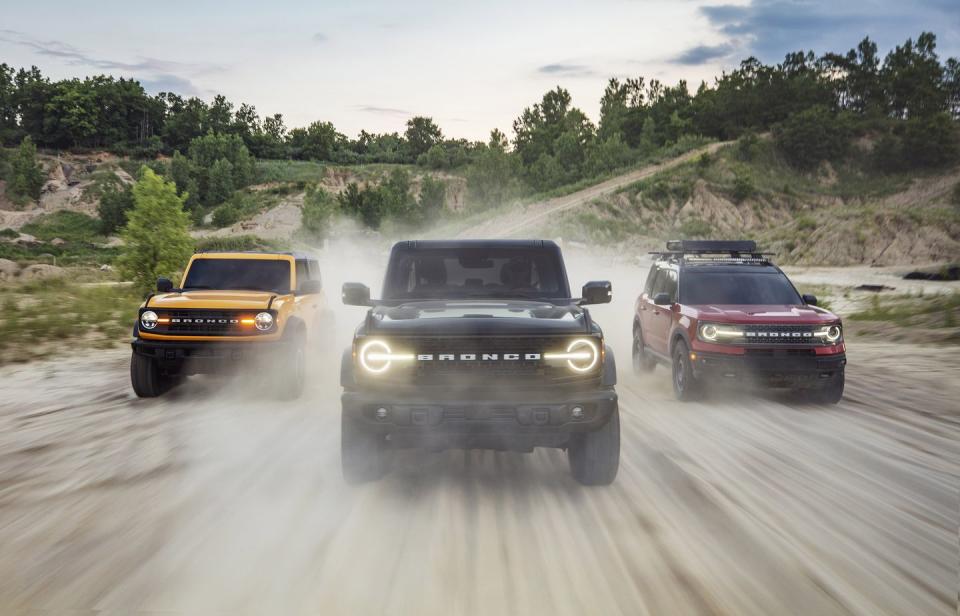
This time around, Ford created a distinct, retro-inspired design for the 4x4, but also backed it up with plenty of off-road credibility across the board. Though there’s certainly a bit of bloat going on, the vehicles have crisp lines and plenty of cool details, including circular headlights that incorporate horizontal daytime running lights, removable doors, and modular components that can be easily swapped with Ford or aftermarket upgrades and accessories.
The Broncos also appear very light on their feet and strikingly well-proportioned, thanks in no small part to the chunky 35-inch tires that are factory options for the first time in any off-road vehicle. Such monumental rubber will help make quick work of most trail obstacles, but the vehicles’ new engineering will do the lion’s share of the work on the trails.
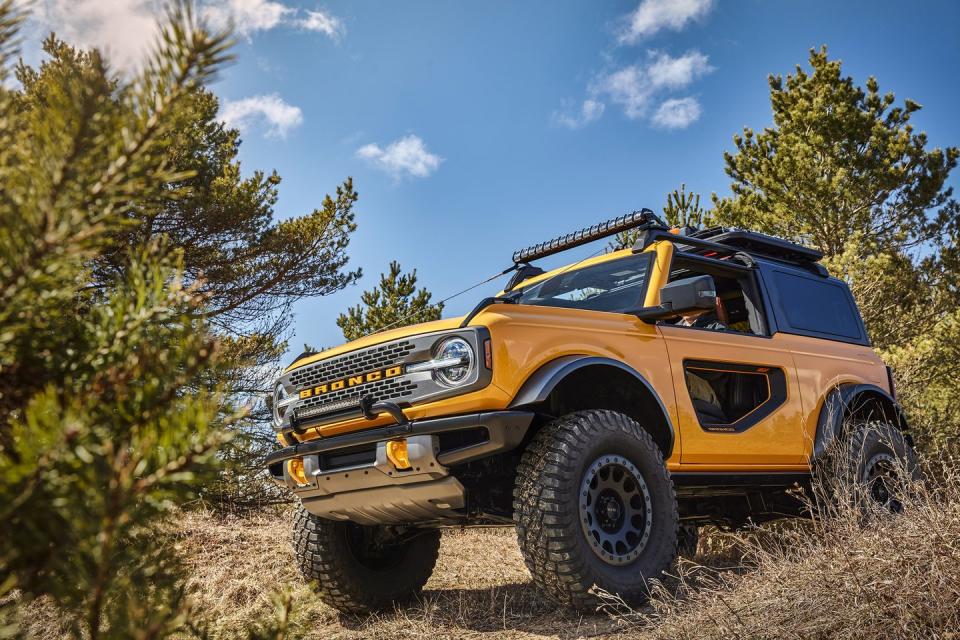
Each variant includes a new Terrain Management System that covers a wider range of terrain types than most off-roaders, including rock-crawling, higher-speed Baja, and one for sand and slippery terrain. The key innovation, however, is an advanced 4x4 option.
The base Bronco uses a two-speed electronic shift-on-the-fly transfer case, while the advanced model uses an electromechanical system that includes automatic shifting between 2H and 4H, which will help eliminate uncertainty about when and where to toggle between the two. The Dana 44 solid rear axle and the Dana independent front differential includes electronic locking capabilities for even more capability in more jagged terrain.

If you’re an off-road enthusiast, you’ll also likely dig the low-speed cruise control, a turn-assist function that tightens the turning radius by vectoring torque to the wheels independently, and a single-pedal drive capability that automatically folds braking in while crawling slowly over rocks, eliminating the need to constantly flip back and forth between pedals.
The Bronco has a best-in-class 94.75:1 crawl ratio when ordered with the optional 7-speed manual transmission—crawl ratio determines how much engine torque is delivered to the wheels at low speed—while the 10-speed automatic transmission delivers a ratio of 67.8:1. An 11.6-inch ground clearance will further help traverse boulders and logs; it’s larger than the Bronco’s direct competitor, the Jeep Wrangler, by nearly an inch.
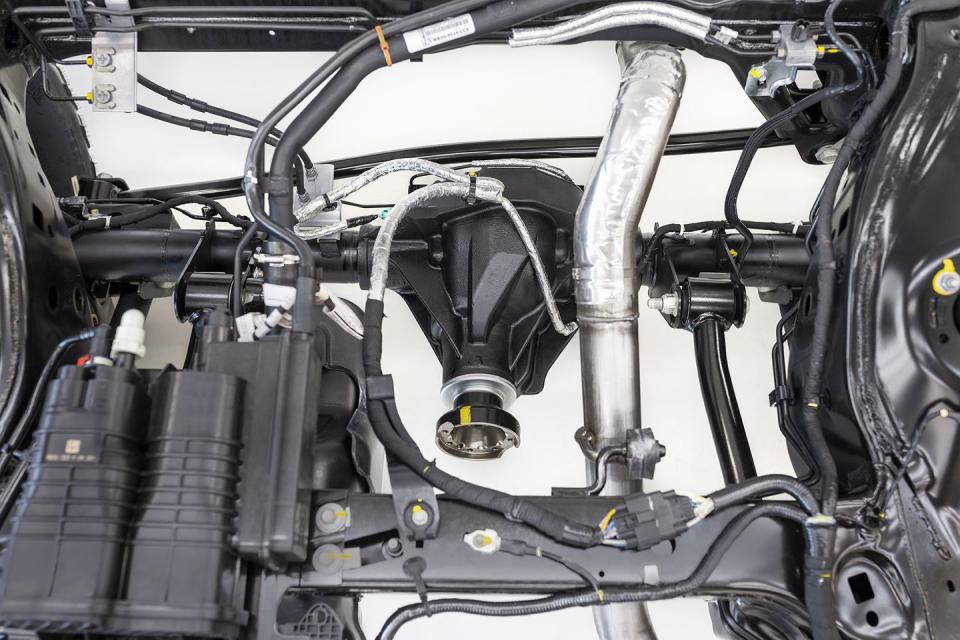
Engine options will include a 2.7-liter EcoBoost V6 delivering 310 hp and 400 lb-ft of torque, or a 2.7-liter four-cylinder producing 270 hp and 310 lb-ft of torque. Durability for the entire package is rated by Ford’s new Built Wild extreme durability testing protocol, which of course kicks the “Built Ford Tough” rating up a notch or two.
Inside the Bronco, trail junkies will find a terrain mapping system that eases off-road navigation via topographic data and trail maps from NeoTreks’ AccuTerra Maps, Trails Offroad trail guides, and FunTreks trail guides. The maps and drive data can be tracked and captured through a smartphone app, with the help of on-board trail cameras, for documentation or sharing.
So what’s the difference between the full-sized Broncos and the smaller Sport model? While the four-door Sport is still a 4x4 and comes with a slightly reduced set of off-road drive modes as well as the low-speed all-terrain cruise control, the SUV isn’t quite as rugged or capable as its bigger brothers. Instead of a solid rear axle, it has an independent suspension front and rear.
The Sport also has a twin-clutch rear drive unit that has a “differential lock feature” instead of a true mechanical locking diff. (It essentially diverts up to 100 percent of the torque to either rear wheel, but won’t be able to muscle you through the same degree of challenges off-road as a locking differential.) It’ll be a good trail-runner that can manage rocks and small tree limbs, but it won’t crawl over boulders or take quite the same degree of abuse as the bigger Broncos.
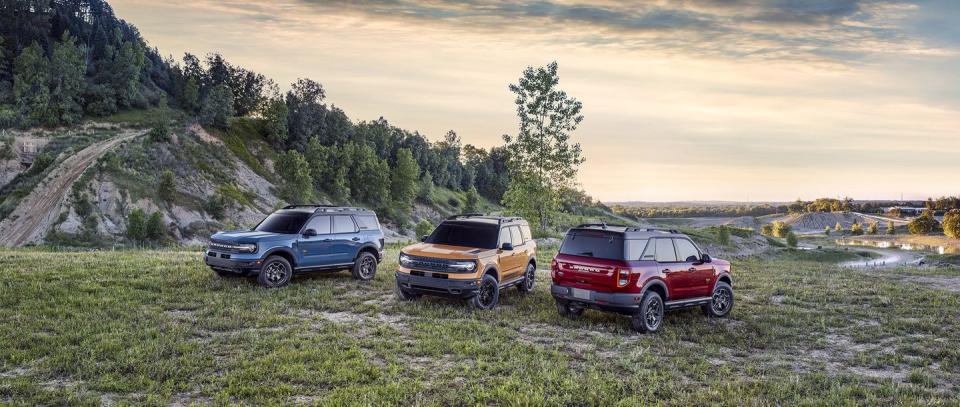
Engine options in the Sport model include a 2.0-liter EcoBoost four-cylinder that produces 245 hp and 275 lb.-ft. of torque, or a 1.5-liter EcoBoost four-cylinder with 181 horsepower and 190 lb.-ft. of torque both mated to an 8-speed automatic. Tire options top out a 29-inch all-terrain rubber.

So while the Sport model is definitely a more user-friendly version—likely engineered to be a more hospitable on-road ride, as well—it’s still no slouch on the trails. Its slightly smaller dimensions will allow it to navigate certain challenges a bit more easily, visibility will likely be better, and it has a robust menu of upgrade and accessory options of its own.
The Sport boasts easy-to-clean rubber and cloth interior surfaces and protected switches, and plenty of clever details like a built-in bottle opener and an overland-ready roof-rack that can accommodate a roof tent. It’s no “soft-roader,” that’s for sure.

The Broncos will arrive in showrooms next spring, with the two-door model starting at $29,995. (The Sport model’s pricing has yet to be announced.) But you can reserve one for $100 right now. Additionally, owners will receive access to Ford’s new “Off-Roadeo” driving schools, which will be offered around the country to help give beginner off-roaders a leg-up on the challenges.
Ultimately, in terms of both style and capability, the Bronco most closely echoes the recent revival of the Land Rover Defender—an esteemed, global product that could have fallen flat on its face if it didn’t live up to its predecessor’s reputation. Just as the new Defender is getting rave reviews for its raw capability and rugged, but sophisticated design, the new Bronco should enjoy a similar reception.
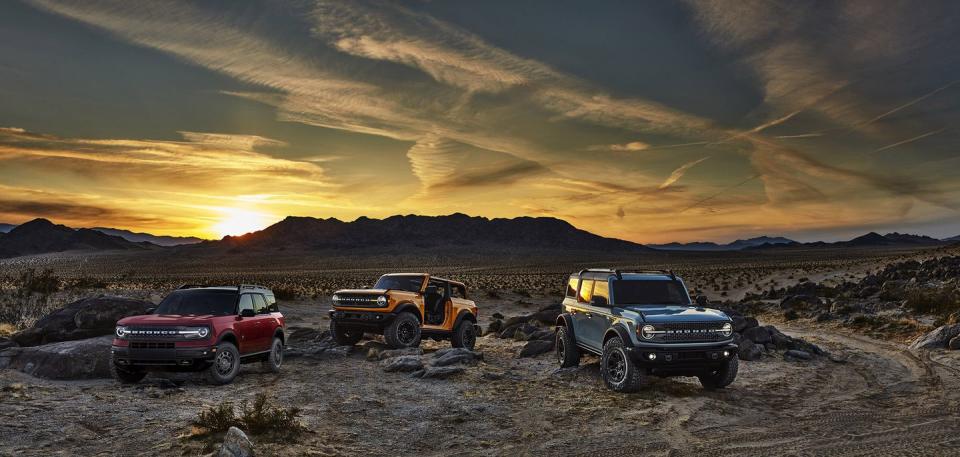
This thing is a legit off-roader, and while not quite as thin and lanky as the original Bronco from decades ago, it will likely appeal to, if not the same exact profile of customer, a new, modern version of that original customer. That’s okay by us.
You Might Also Like

